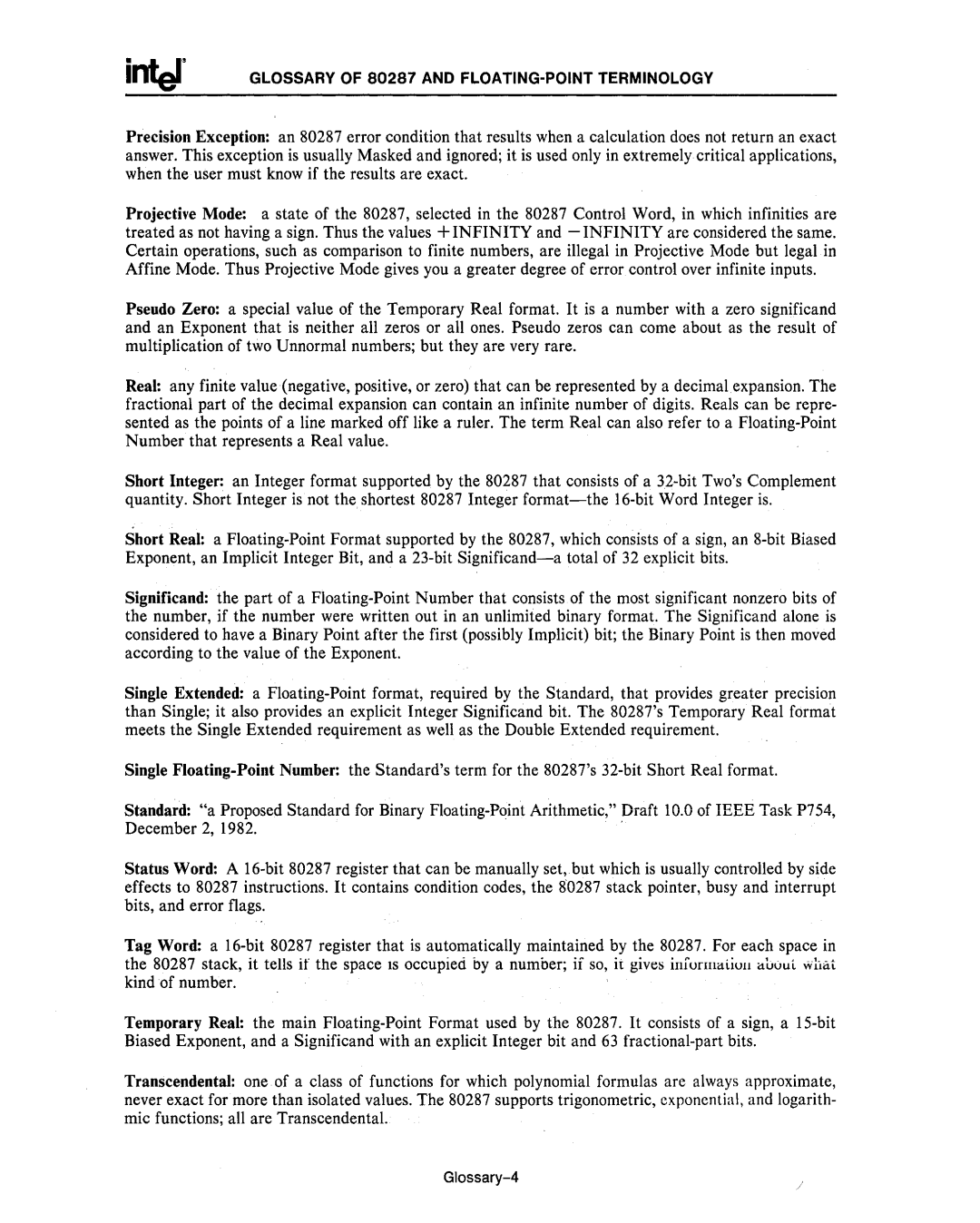
GLOSSARY OF 80287 AND
Precision Exception: an 80287 error condition that results when a calculation does not return an exact answer. This exception is usually Masked and ignored; it is used only in extremely critical applications, when the user must know if the results are exact.
Projective Mode: a state of the 80287, selected in the 80287 Control Word, in which infinities are treated as not having a sign. Thus the values +INFINITY and - INFINITY are considered the same. Certain operations, such as comparison to finite numbers, are illegal in Projective Mode but legal.in Affine Mode. Thus Projective Mode gives you a greater degree of error control over infinite inputs.
Pseudo Zero: a special value of the Temporary Real format. It is a number with a zero significand and an Exponent that is neither all zeros or all ones. Pseudo zeros can come about as the result of multiplication of two Unnormal numbers; but they are very rare.
Real: any finite value (negative, positive, or zero) that can be represented by a decimal expansion. The fractional part of the decimal expansion can contain an infinite number of digits. Reals can be repre- sented as the points of a line marked off like a ruler. The term Real can also refer to a
Short Integer: an Integer format supported by the 80287 that consists of a
Short Real: a
Significand: the part of a
Single Extended: a
Single
Standard: "a Proposed Standard for Binary
December 2, 1982. | '. |
Status Word: A
Tag Word: a
Temporary Real: the main
Transcendental: one of a class of functions for which polynomial formulas are always approximate, never exact for more than isolated values. The 80287 supports trigonometric, exponential, and logarith- mic functions; all are Transcendental.
Glossary-4
J
